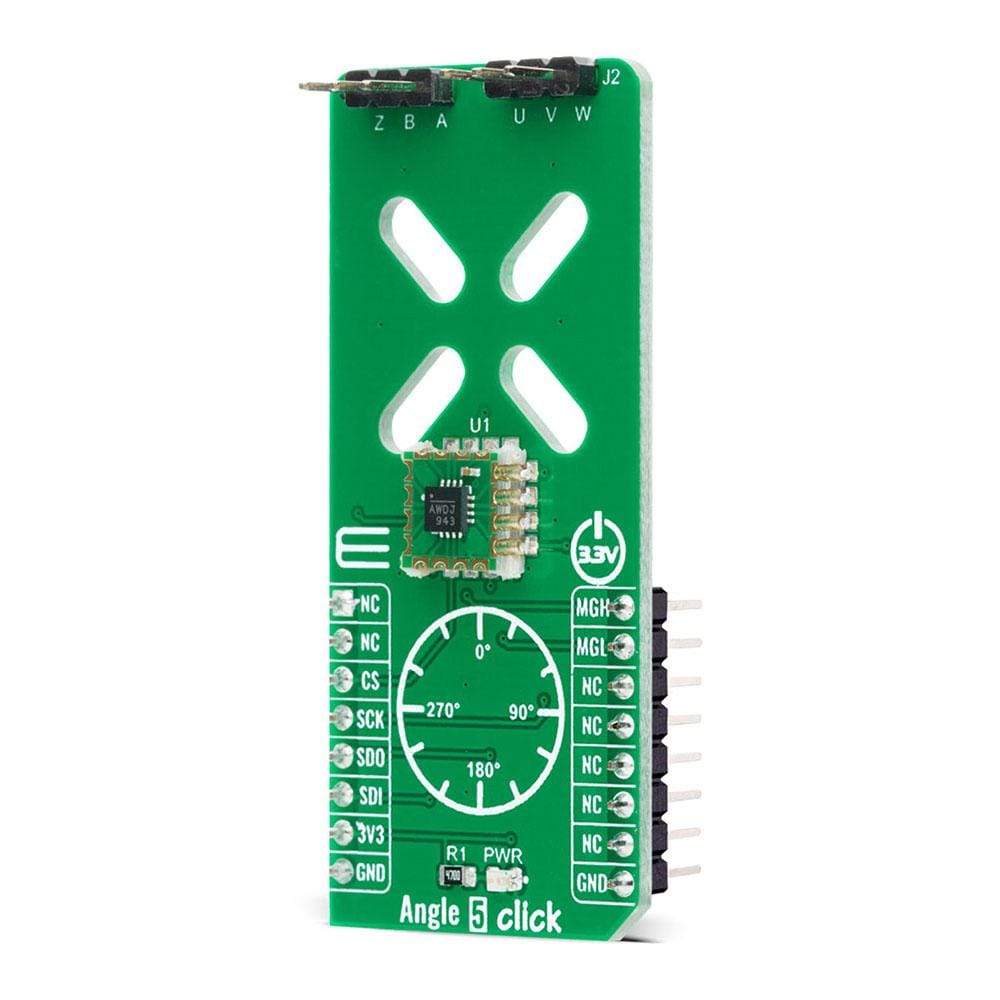
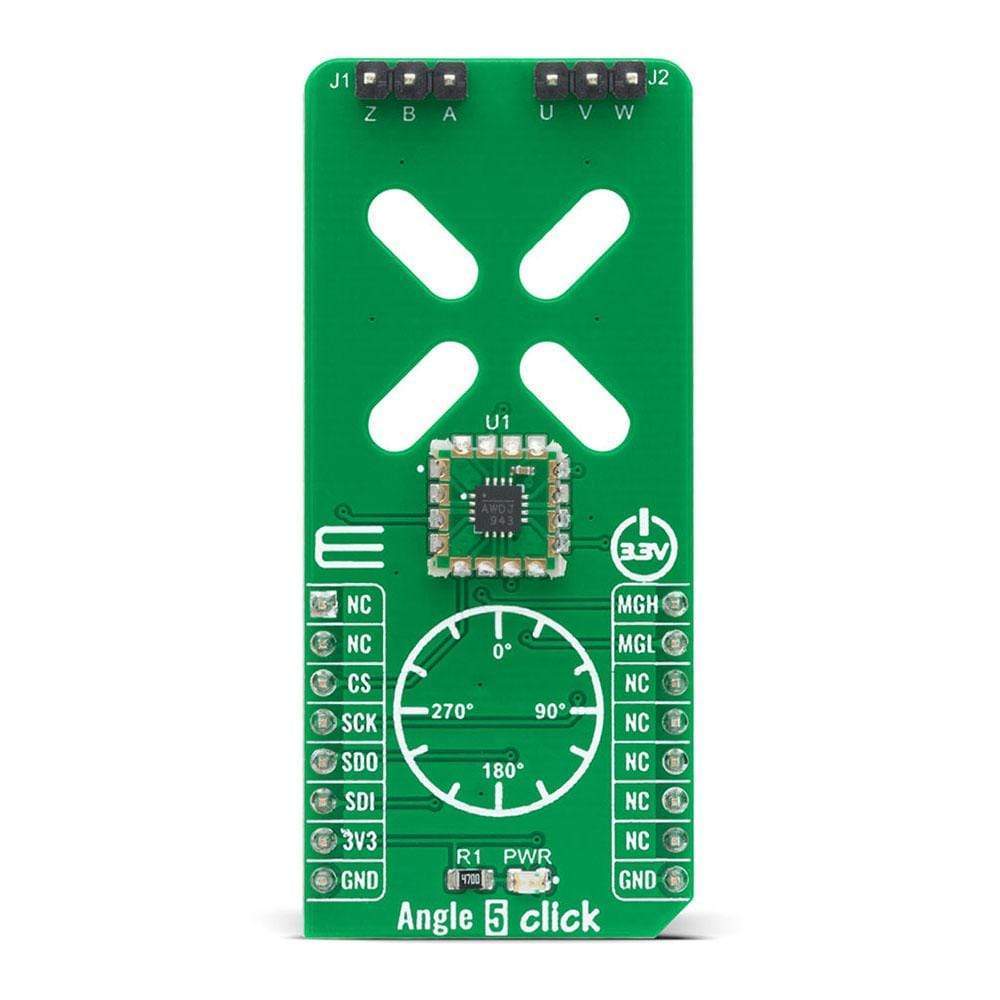
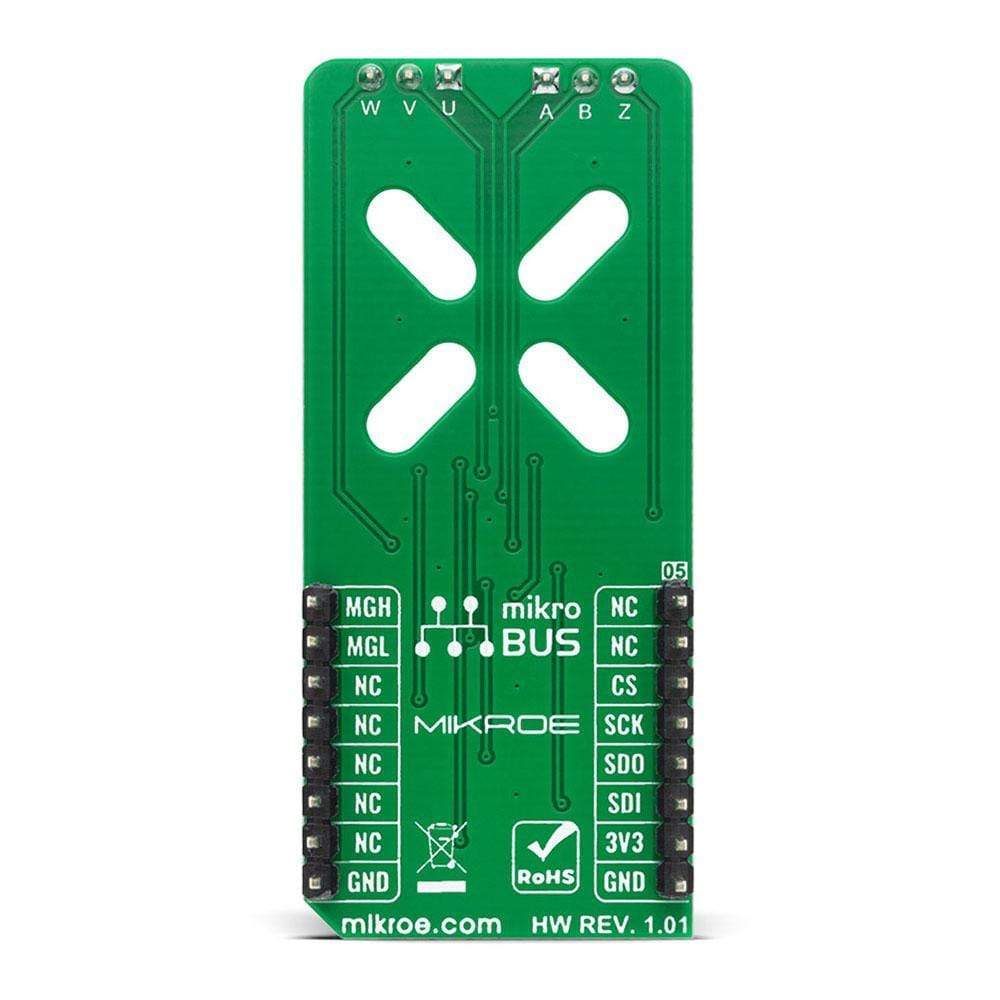
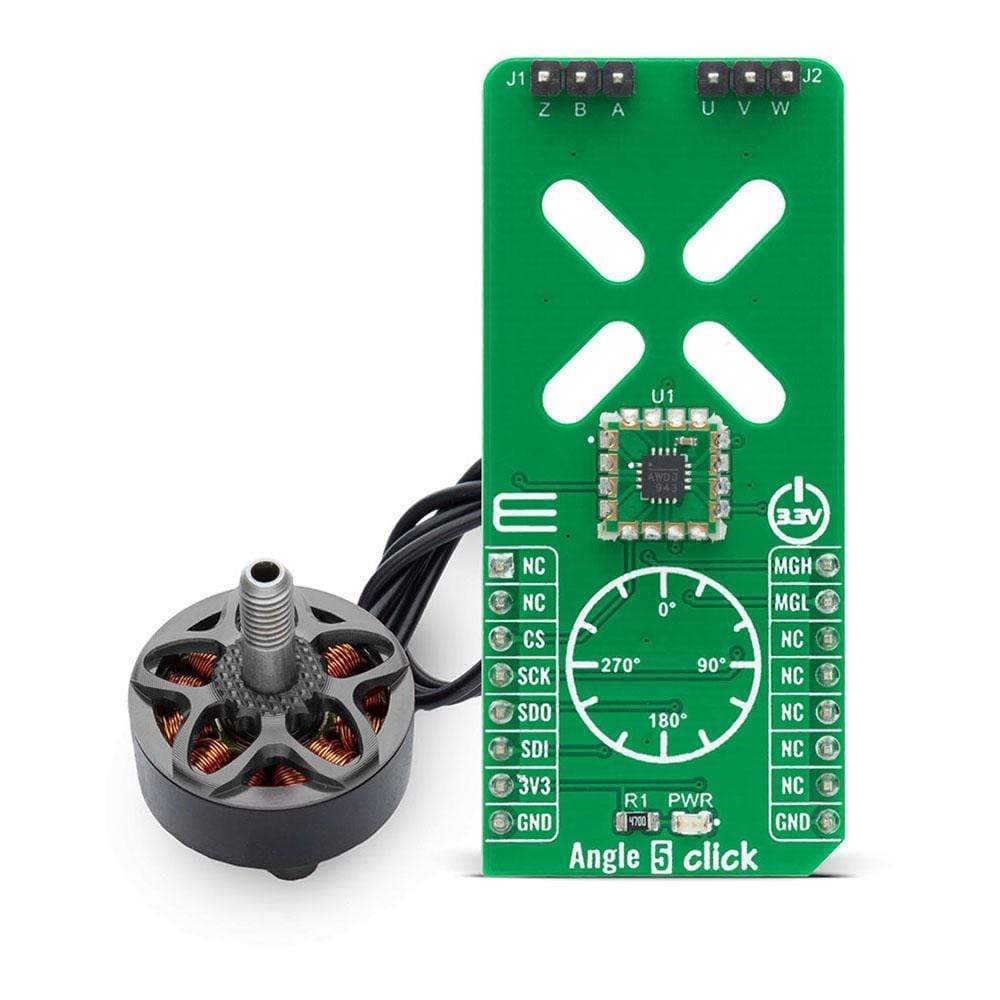
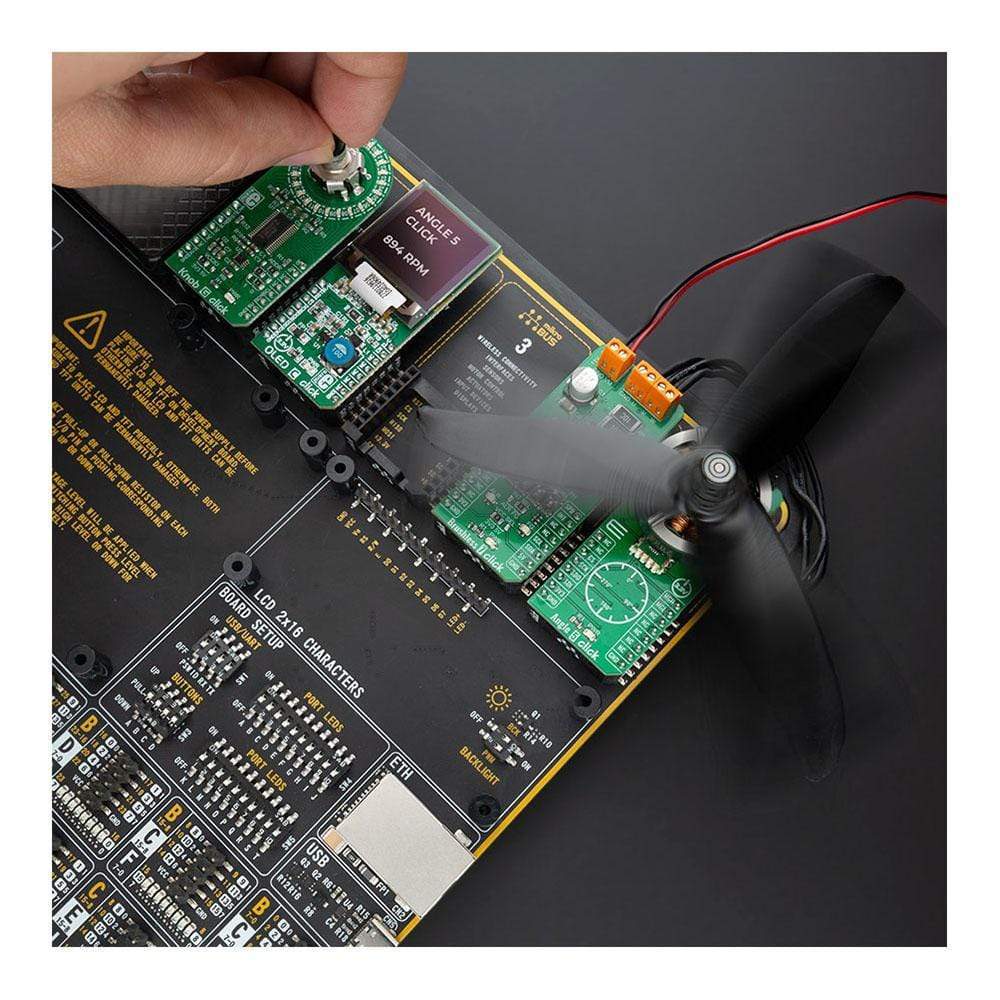
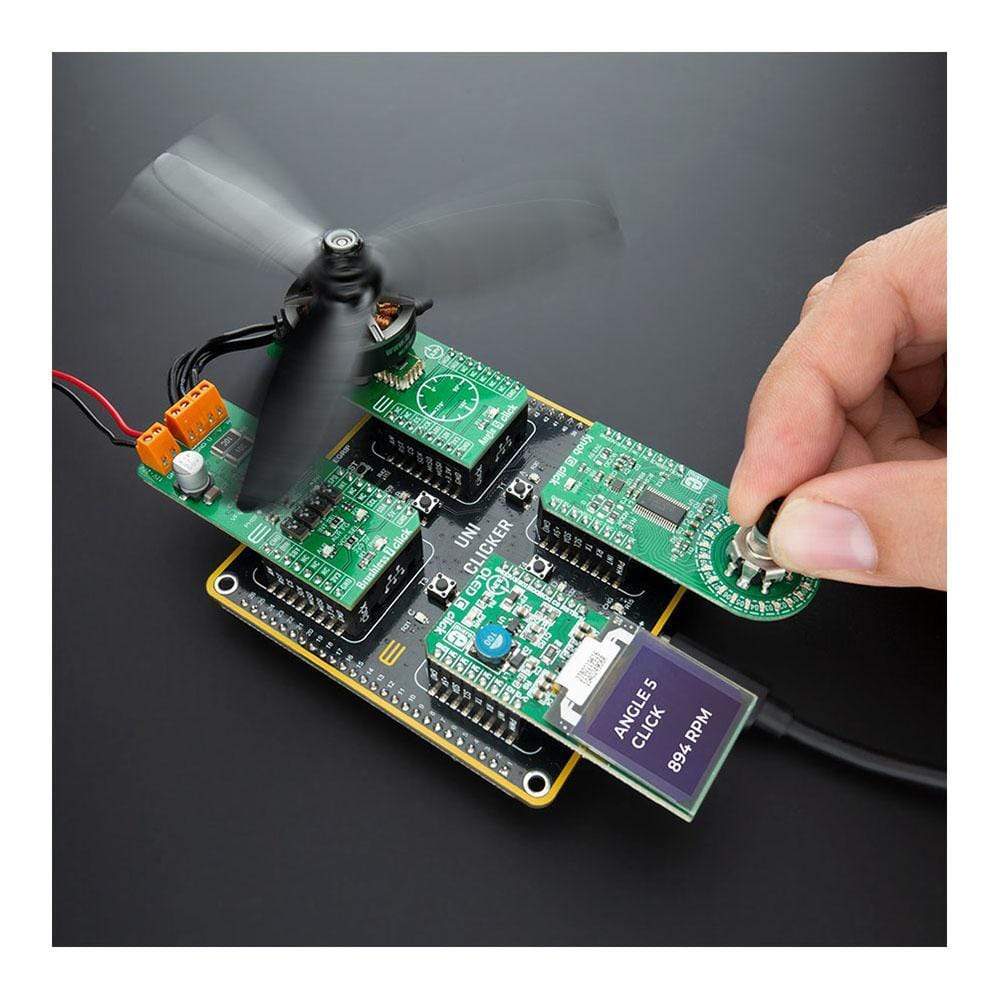
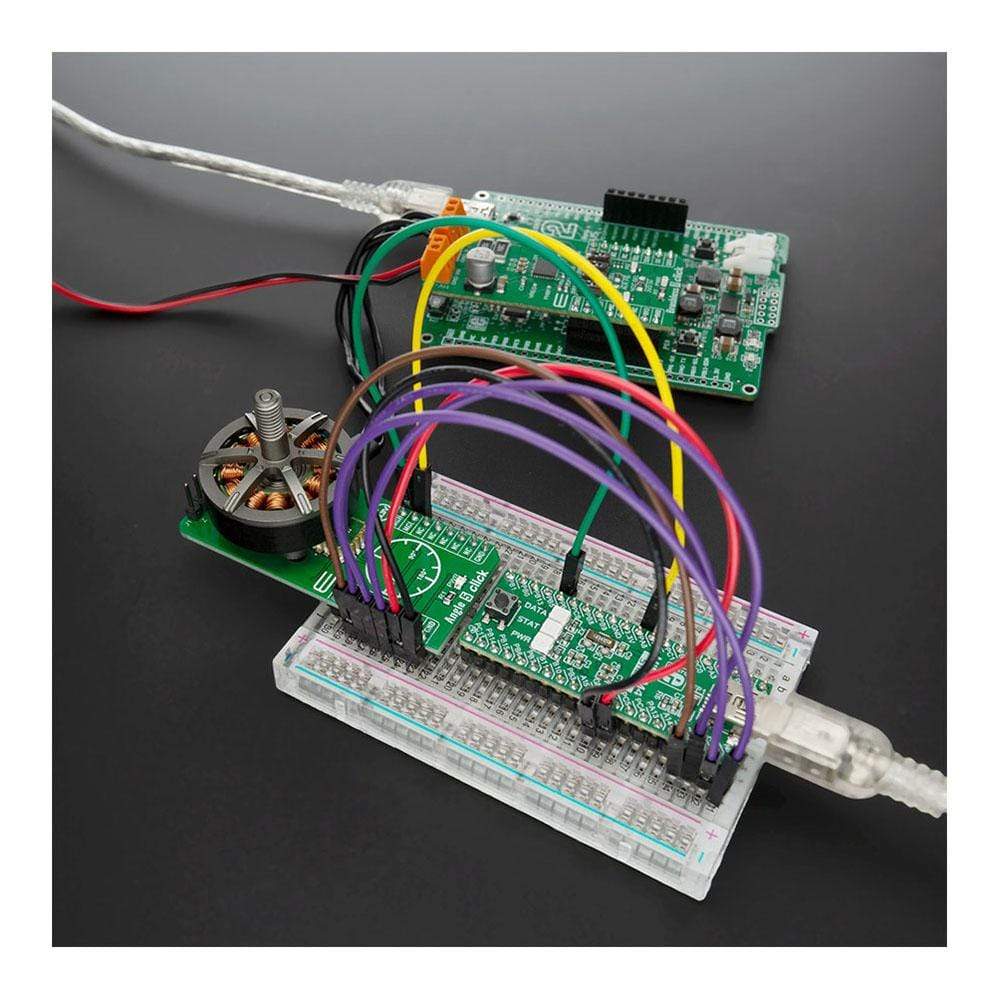
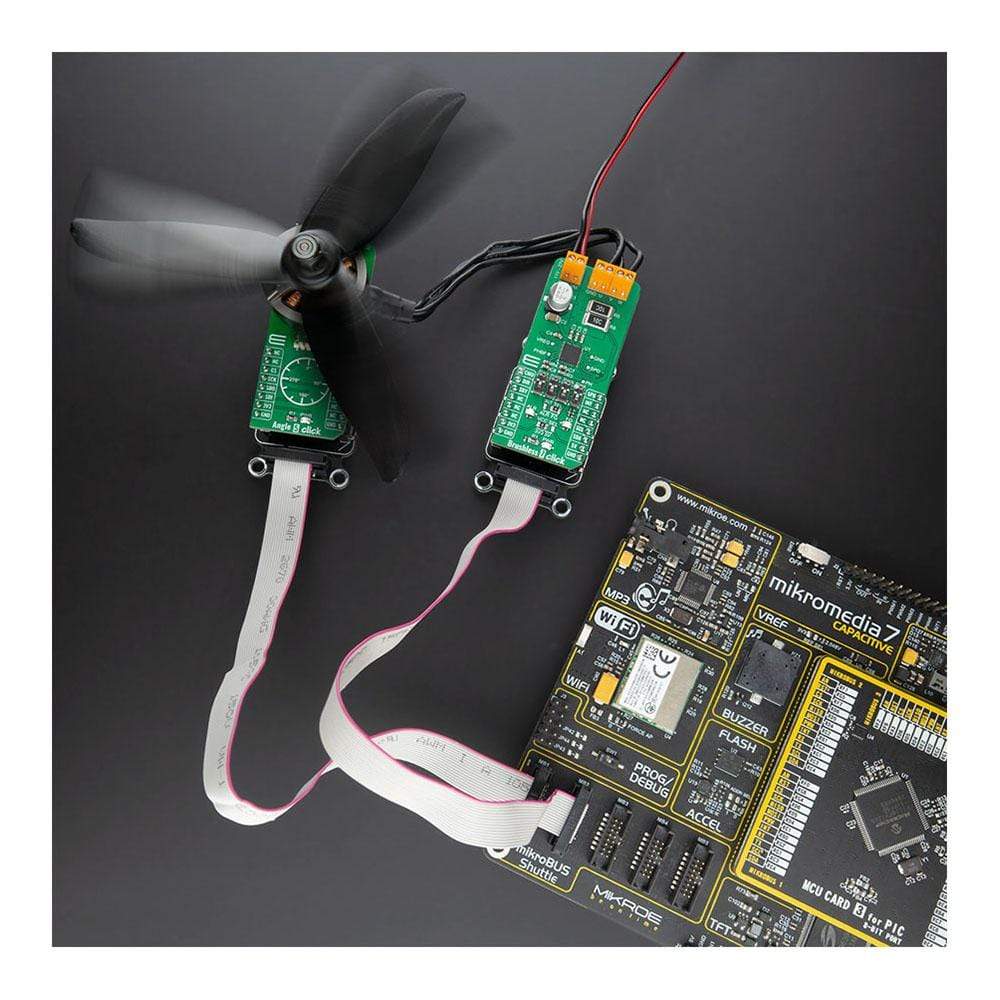
Overview
The Angle 5 Click Board™ is a compact add-on board that detects the absolute angular position of a permanent magnet, typically a diametrically magnetized cylinder on a rotating shaft. This board features the MA302, a 12-bit digital contactless angle sensor with ABZ and UVW incremental outputs from Monolithic Power Systems. The MA302 features an ABZ encoder, UVW pole pair emulation, fast data acquisition, and processing which provides accurate angle measurement at speeds from 0 to 60,000 rpm, and a magnetic field strength detection with programmable thresholds. This Click Board™ is suitable for various applications such as detecting the absolute rotor position of a brushless motor in real-time, even without a target magnet, by measuring the fringe field of the rotor.
Note: DC Motor doesn't come with this Click Board™, if you are interested you can find 2207V-2500KV BLDC Motor in our shop.
The Angle 5 Click Board™ is supported by a mikroSDK compliant library, which includes functions that simplify software development. This Click Board™ comes as a fully tested product, ready to be used on a system equipped with the mikroBUS™ socket.
Downloads
Das Angle 5 Click Board™ ist eine kompakte Zusatzplatine, die die absolute Winkelposition eines Permanentmagneten erkennt, typischerweise ein diametral magnetisierter Zylinder auf einer rotierenden Welle. Diese Platine verfügt über den MA302, einen digitalen kontaktlosen 12-Bit-Winkelsensor mit ABZ- und UVW-Inkrementalausgängen von Monolithic Power Systems. Der MA302 verfügt über einen ABZ-Encoder, UVW-Polpaar-Emulation, schnelle Datenerfassung und -verarbeitung, die eine genaue Winkelmessung bei Geschwindigkeiten von 0 bis 60.000 U/min ermöglicht, sowie eine Magnetfeldstärkeerkennung mit programmierbaren Schwellenwerten. Dieses Click Board™ eignet sich für verschiedene Anwendungen wie die Erkennung der absoluten Rotorposition eines bürstenlosen Motors in Echtzeit, auch ohne Zielmagnet, durch Messung des Randfelds des Rotors.
Hinweis: Im Lieferumfang dieses Click Board™ ist kein Gleichstrommotor enthalten. Bei Interesse finden Sie in unserem Shop einen 2207 V-2500 KV BLDC-Motor.
Das Angle 5 Click Board™ wird von einer mikroSDK-kompatiblen Bibliothek unterstützt, die Funktionen enthält, die die Softwareentwicklung vereinfachen. Dieses Click Board™ wird als vollständig getestetes Produkt geliefert und ist bereit für den Einsatz auf einem System, das mit der mikroBUS™-Buchse ausgestattet ist.
| General Information | |
|---|---|
Part Number (SKU) |
MIKROE-4270
|
Manufacturer |
|
| Physical and Mechanical | |
Weight |
0.02 kg
|
| Other | |
Country of Origin |
|
HS Code Customs Tariff code
|
|
EAN |
8606027380259
|
Warranty |
|
Frequently Asked Questions
Have a Question?
Be the first to ask a question about this.








